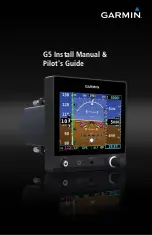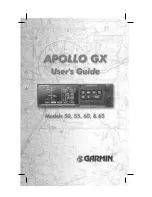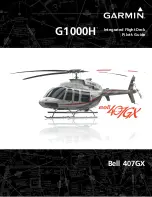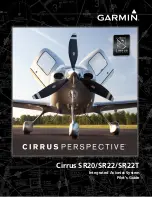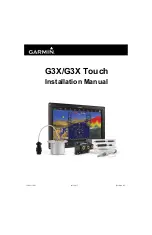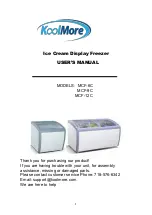
____________________________________________________________________________
89000004-101
KI 300 Installation Manual
Rev 1
Page 3-4
© Honeywell International Inc. Do not copy without express permission of Honeywell.
TSO-C201 §3(e), § 6(g) and corresponding MOPS DO-334 § 2.1.7.2
TSO-C8E §3(e), § 6(h)
The above deviations have been FAA approved.
3.2.8
Degraded Mode Operations
Errors will not exceed TSO limit specifications. When a cross check message is present, the KI 300 is
considered to be in degraded mode. The TSO tested maneuvers represent typical flight. Degraded
mode may occur if a pilot maintains an accelerated frame of reference (i.e. turns) for greater than 3
minutes.
Operation in this Degraded Mode does not imply that attitude availability from the KI 300 has been lost.
During this Degraded Mode, attitude information is always available to the pilot - it is never removed or
made un-available unless failure occurs.
When operating in this Degraded Mode, the KI 300 will show an attitude inaccuracies, on the order of
±3.0°. This condition will self-correct once the maneuver is completed.
The limited performance degradation in this mode meets the applicable performance requirements of
TSO-C201/DO-334 § 2.2.4.2 (Degraded Mode Accuracy), 2.2.4.2.1 (Degraded Mode Pitch Accuracy), &
2.2.4.2.2 (Degraded Mode Roll Accuracy), for “basic attitude performance”, meaning it is sufficient to
maintain positive aircraft control.
Therefore, for backup applications where air data is also utilized in the PFD solution, should air data
become un-available in a common mode failure scenario, basic attitude performance is maintained by
the KI 300. This is compliant with 14 CFR 23.1311 § (b) and applicable sections of AC 23-1311.1C.
Degraded Mode operation is defined by TSO-C201/RTCA DO-334 § 2.2.4 as follows:
The intended function of a degraded mode (if provided) is to provide basic attitude performance,
despite one or more AHRS failures. A degraded mode is intended to allow a pilot to maintain
positive aircraft control while maneuvering under IMC, including IFR en route operations, climbs,
descents, holds, fly an instrument approach to minimums, and return the aircraft back to level
following an upset.(…)
3.3
Pneumatic Source
For operations in IFR conditions, TSO-C16a (or equivalent) pitot and pitot-static tubes must be utilized as
the source of pitot and static air pressure.
3.4
Cooling Considerations
The KI 300 does not require any special cooling considerations.



































